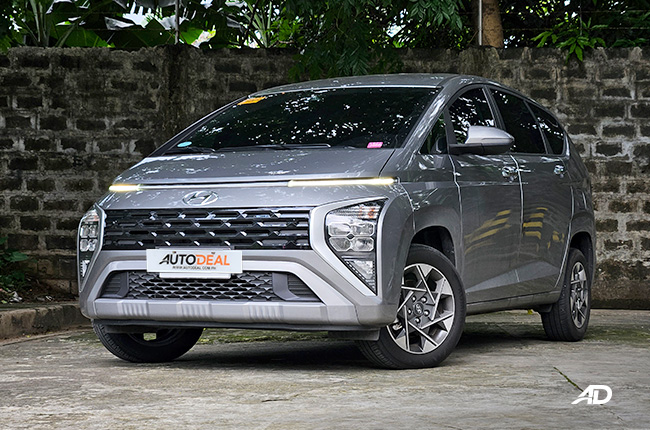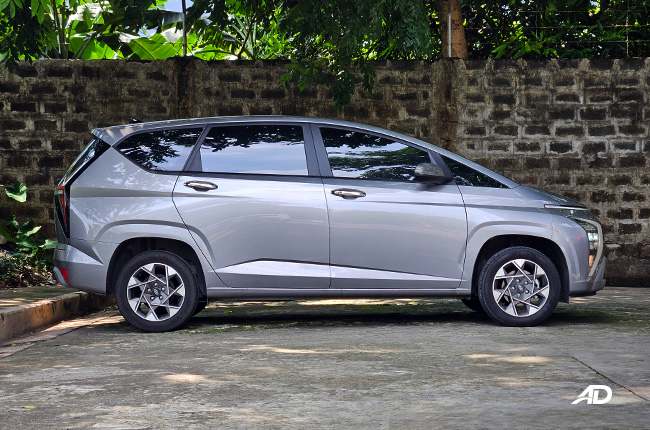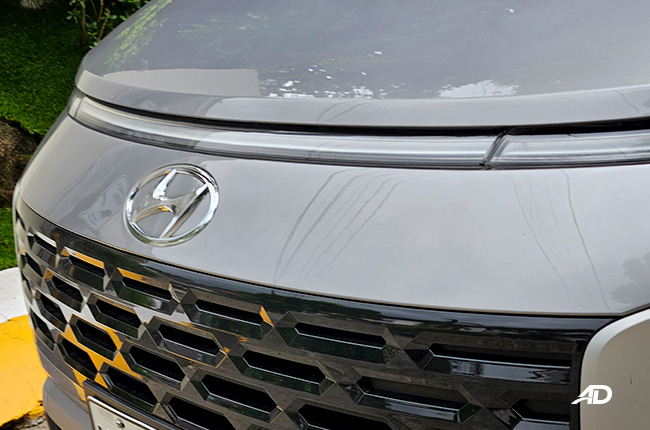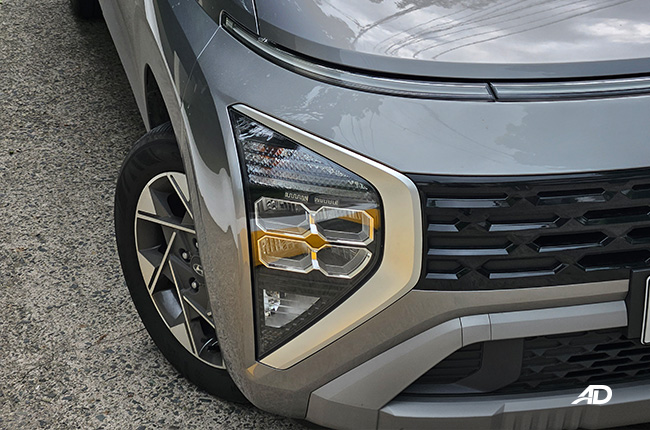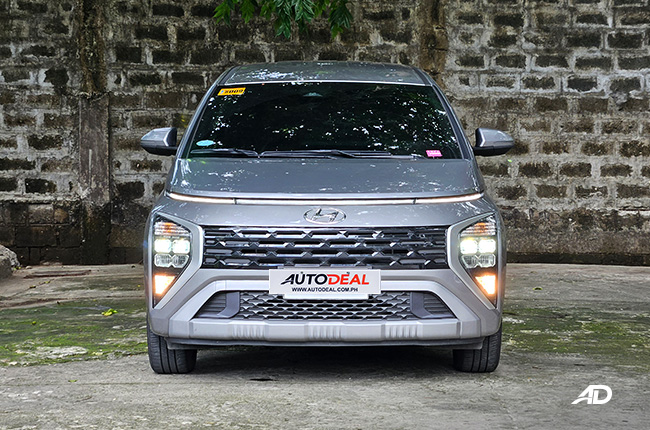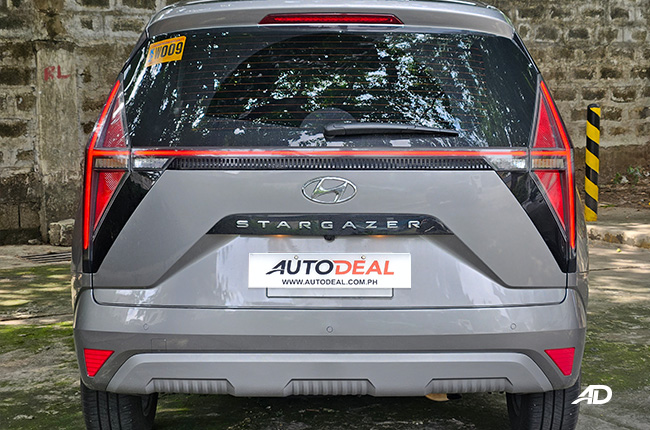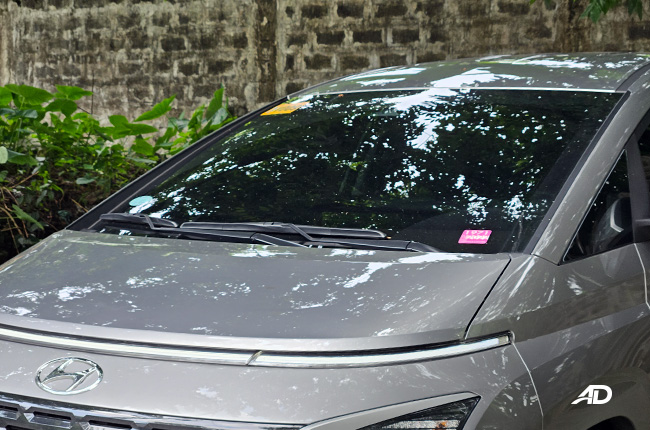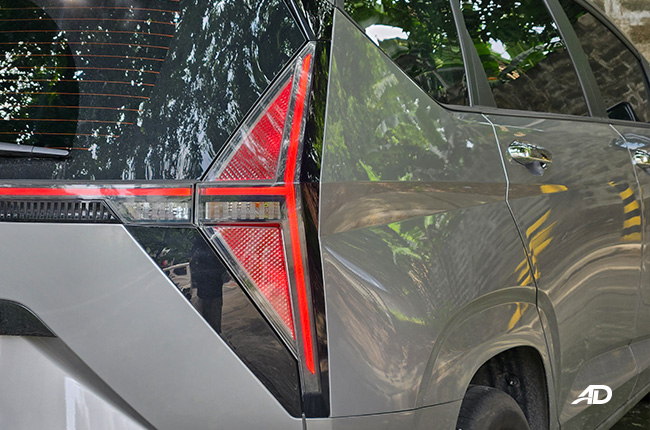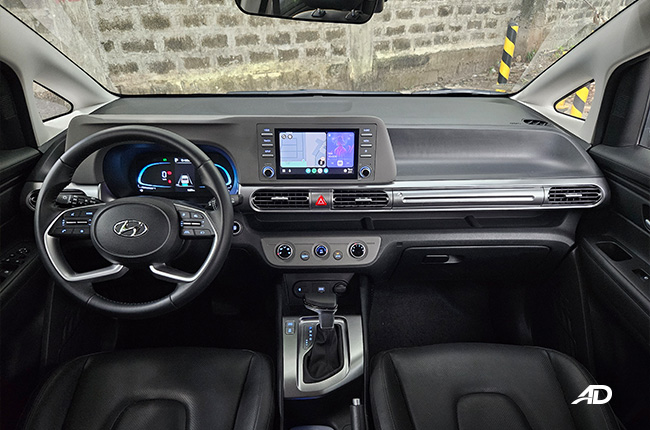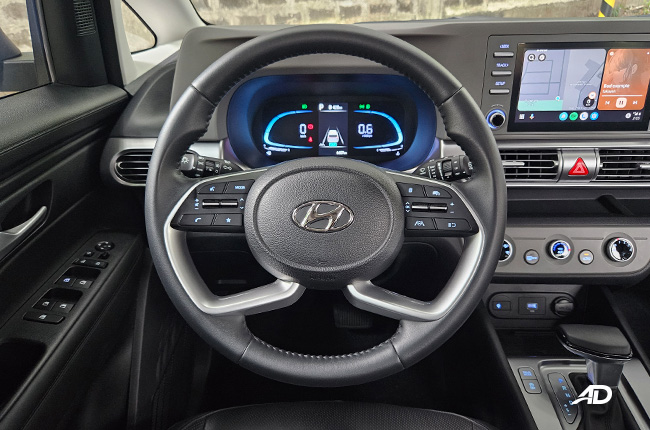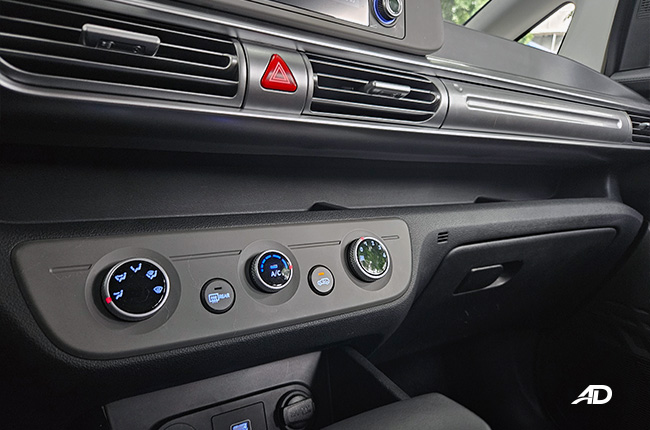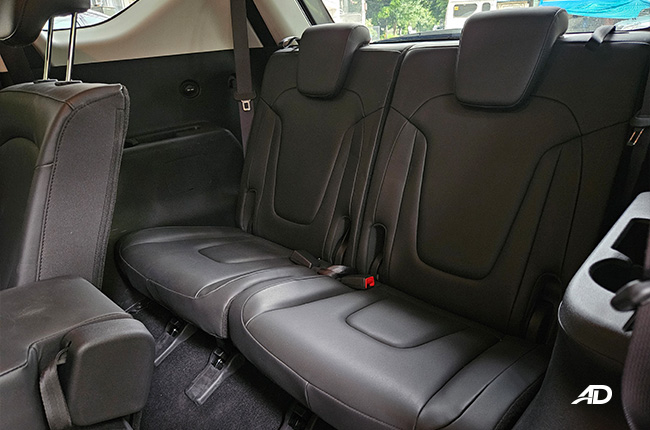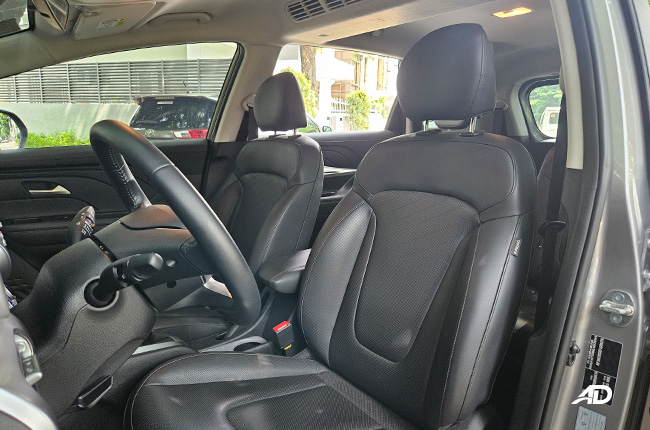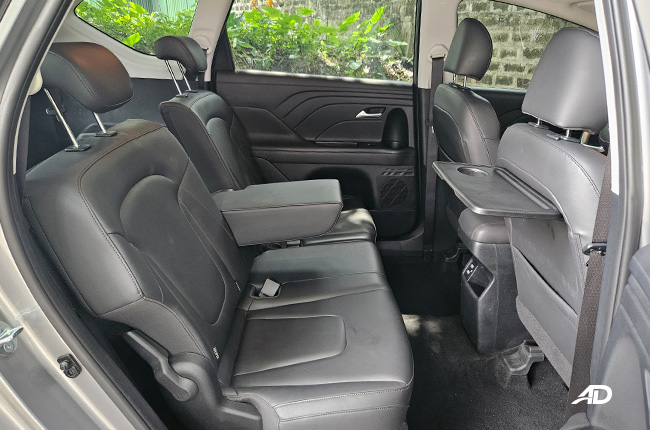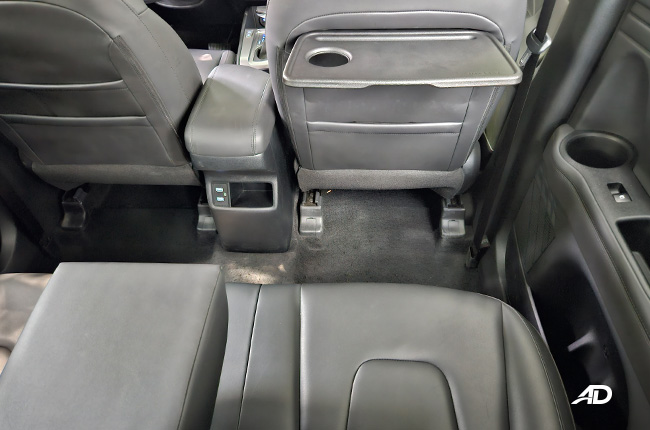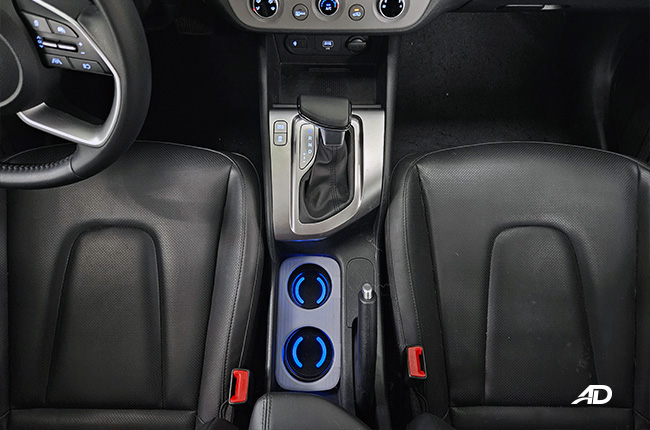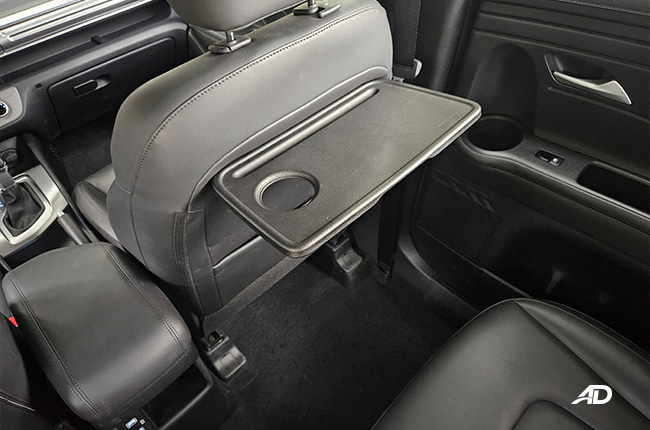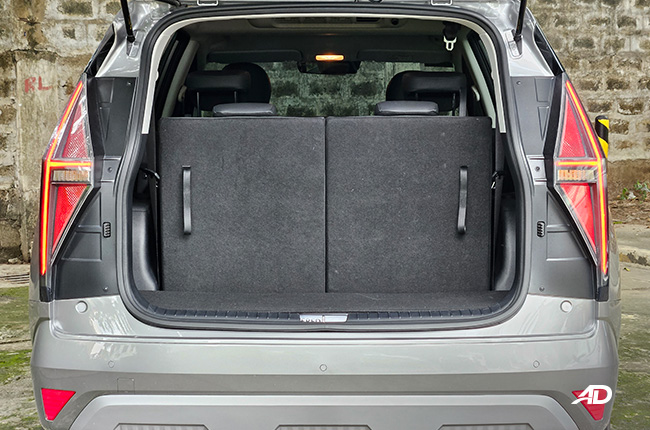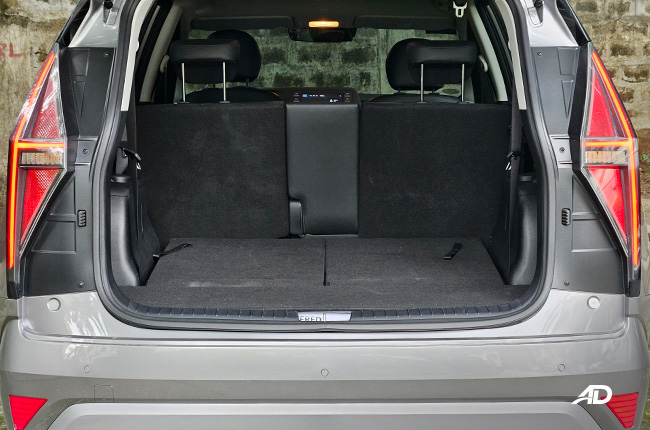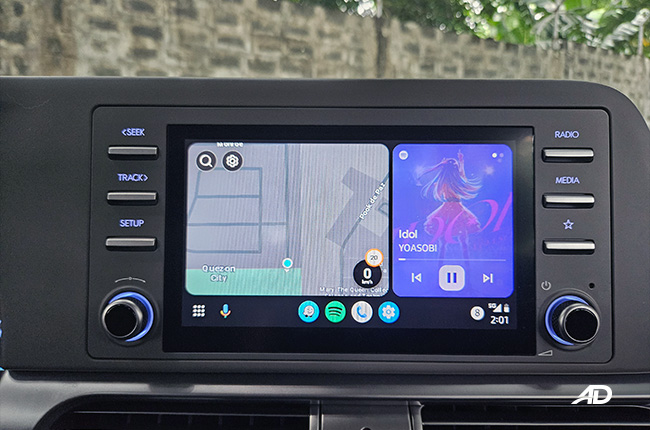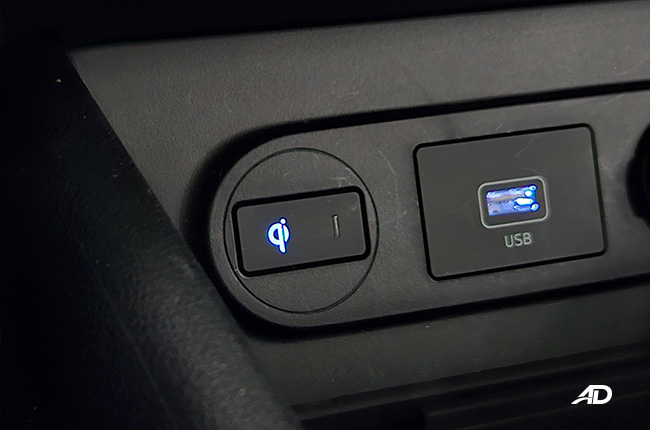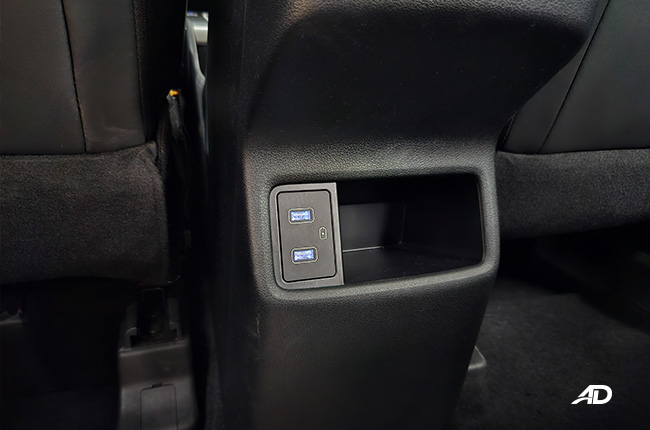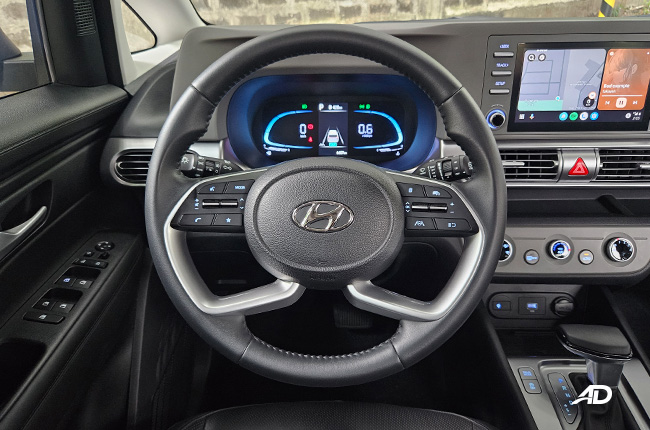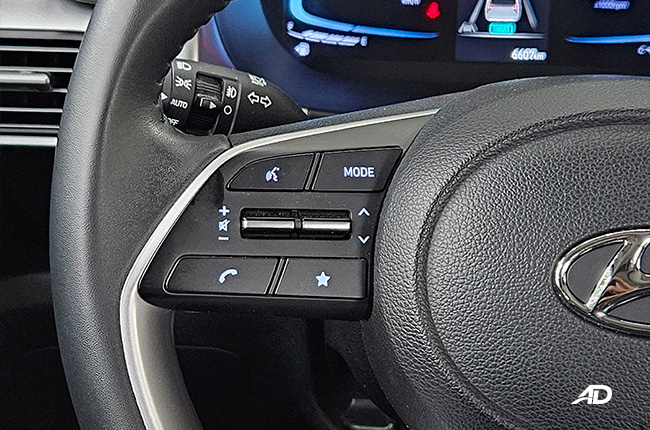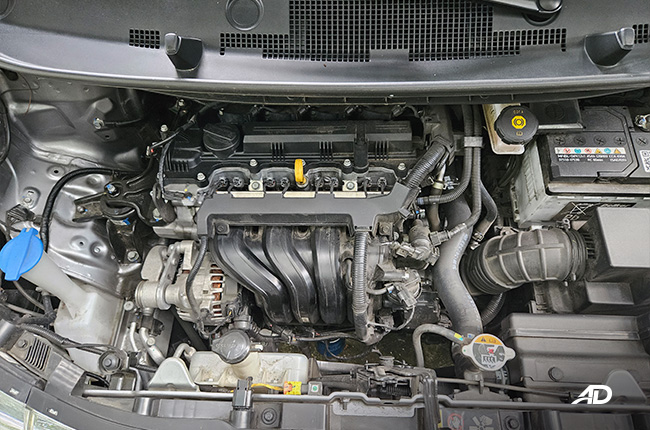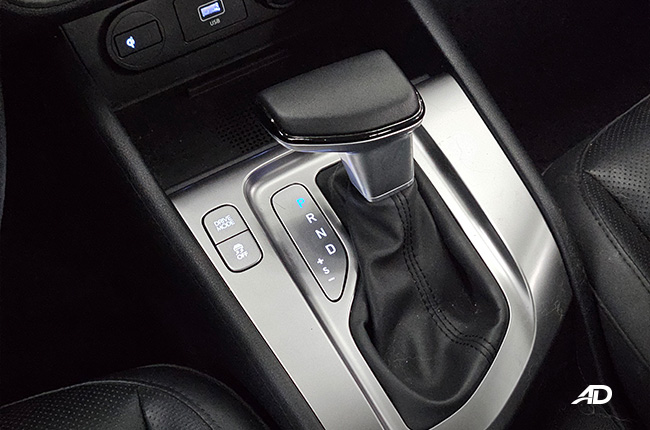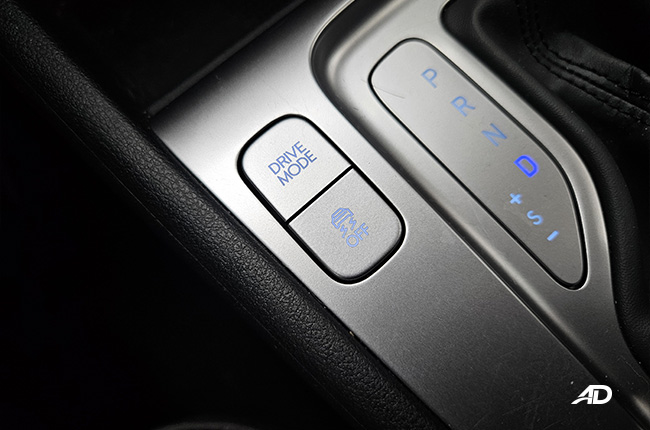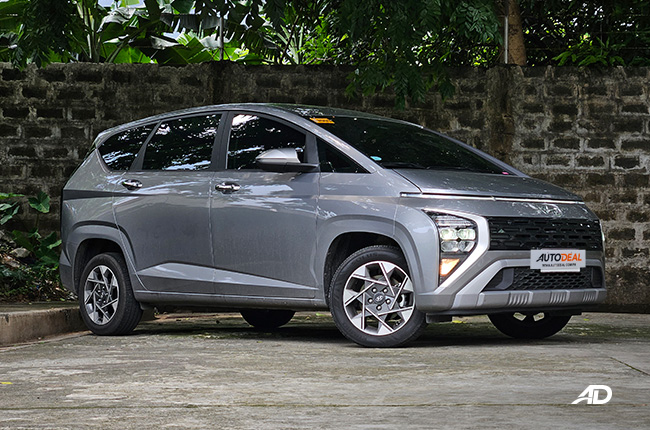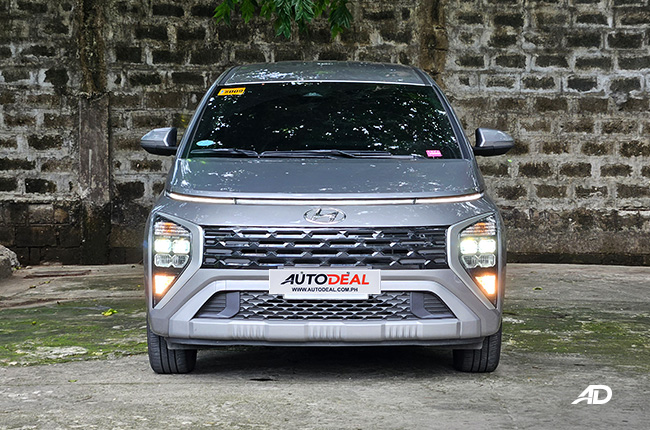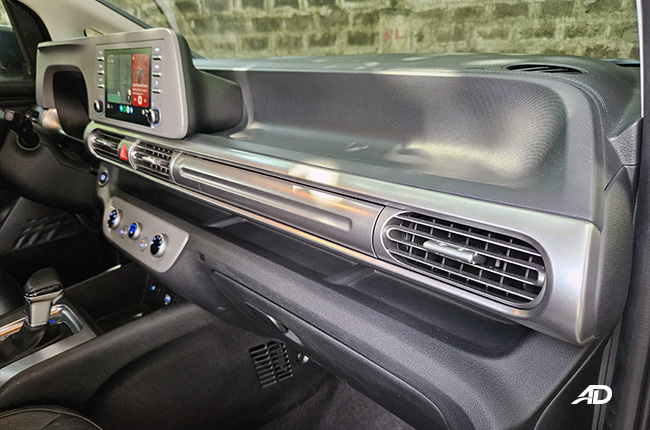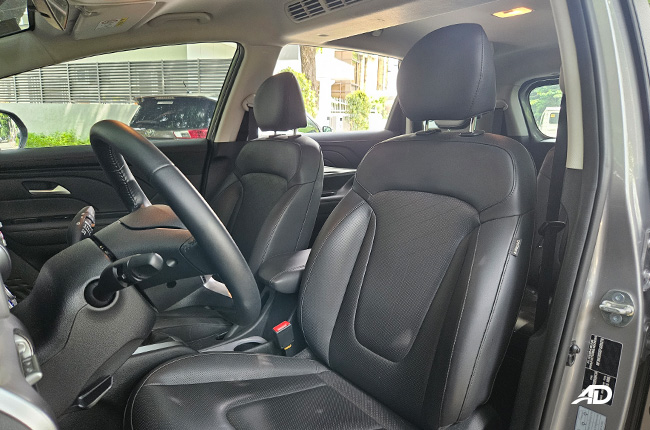
Is there room for one more seven-seater in the market? Well, Hyundai apparently thinks so, on its own, and it’s actually pretty great. Considering that there is a template in the segment for features, size, and affordability, it’s perfect timing for a competent brand like Hyundai to take a stab at the segment.
We first got the Staria, a lovely example of a full-sized van that was all sorts of impressive, but if you take the design ethos of that model and reshape it into a seven-seater, will it still be as good? If you shoot for the Staria and miss, will you be okay landing in the Stargazer? Let’s check out what this seven-seat MPV has to offer, this is the 2023 Hyundai Stargazer GLS Premium IVT.
Engine Output (HP), Acceleration, Transmission, Handling 4.5/5
Exterior & Interior Design, Quality, Fit and Finish, Ergonomics 4.0/5
Cabin Comfort, Suspension, NVH Insulation 4.0/5
Convenience Technologies, Active and Passive Safety Features 4.5/5
Amount of the vehicle you get for the price, Fuel Efficiency 4.5/5
- Thoughtful interior and exterior design
- Responsive transmission and engine combo
- Wireless Apple CarPlay and Androidi Auto
- No Automatic Climate Control at this top-spec trim
- The gauge cluster hood and infotainment system frame gets distracting
- Front visibility is a little lacking
Exterior
The top-of-the-line variant in the Stargazer stable, the GLS Premium has a lot of things going for it, and it doesn’t look bare. LED headlights are present, and so is a gorgeous LED strip that spans the entire width of the front bumper. This is a signature style element from both the Staria and the Stargazer, and it’s something that you definitely cannot mistake for anything else. Paired with the large grille, the front end catches attention, for better or for worse. Love-it-or-hate-it, we like it, but we will admit that it is a bit polarizing because it’s such a radical redesign of the traditional MPV look, much like how the Xpander was a bit polarizing back when it was first teased and then introduced.
Perhaps it’s the shape of the MPV that catches a lot of people off guard as the front clip joins seamlessly with the A-pillar of the automobile, forming an egg shape of sorts, similar to the Staria. Without a distinct starting and end point between the nose and the roofline, what you end up with is a car with a bit of an egg shape, and that theme continues on to the rear. You could say that it looks like a car from the future, and you’re probably right. Whether its design was executed right is still up for debate, but in terms of vehicle design, Hyundai gets the fundamentals right with a distinct front, a shapely side profile, and a rear that catches the eye with LEDs and parametric shapes. Before you can say it, we’ll beat you to it: yes, it does look like a spaceship, albeit, quite a good-looking one.
Still, we stick by our findings with regard to its design, and the Stargazer is also on the money when it comes to its dimensions and specifications for the class. The wheels are up to 16 inches in diameter and you get a ground clearance of 185mm. Dimensions-wise at 4,460 mm long, 1,780 mm wide, 1,695 mm tall, and on a 2,780 mm wheelbase, the size is par for the course. The Stargazer’s round design makes it look visually smaller compared to its boxier rivals, just something worth noting. Overall, however, it’s really one of the first models in our books that broke the mold in terms of traditional MPV design, by introducing something we’ve never seen before, in a package that takes a break from the rest of the industry.
Interior
Speaking of taking a break from the norm, the Stargazer continued to surprise us with its interior design. Stepping into the cabin, you are greeted with a not-so-generic look, and the car is all the better for it, save for a few questionable choices here and there. Overall, the cabin is well-designed and very detailed, to the point where the rear blower vents had their own novel design that was native to the Stargazer, and not like the traditional boxy vents that we get in order MPVs. Some of the drawbacks of the Stargazer’s design include a windshield that doesn’t have the best visibility due to its slant, and also that combination gauge hood-infotainment display frame that also robs you of some forward visibility. We get what Hyundai was trying to go for here, but a more open dashboard would have been preferable since the front glass is quite small due to the vehicle’s design.
Apart from that minor oversight, however, we loved the fact that there are ambient lights in the cup holders, the interior is a nice shade of blue, and it plays with shades of grey, black, and light-toned plastics to create a more inviting look, and there are also metallic finishes that add a dash of premium to the cabin. The Stargazer is one stylish MPV in comparison to the rest of the segment, at least on the interior side of things.
In its design fervor, however, Hyundai didn’t skip on the amenities and the convenience features. Like other established nameplates in the segment, the Stargazer has a number of storage spaces and compartments for you to use. The dashboard also hides a nice little shelf for some smaller items, and also a hidden compartment that can hide your phone or RFID cards. More cubby holes and bottle holders can be found on the door cards and panels from the front to the rear, but what really got us was the tray table for the rear passenger. While small and meant for a cup and some light items, the tray table struck us as something that you never knew you needed. Whether it was for storing a drink, plopping an iPad on, or simply for some snacks, it was weirdly useful, and a feature that we eventually found a use for.
As for space, it fits medium to large people well in the middle row, but please reserve your more compact individuals at the back. As with all MPVs, we deem the space fitting for short drives. Any longer and you might run into complaints. Cargo volume is okay with all the seats up with 200 liters available with the third row in play. With it down, you’re probably in the ballpark of 500 liters, but fold all the seats down and you can get up to 1,892 liters of space, and to make things more impressive, that’s even more than the Mitsubishi Xpander coming in with 1,632 liters. While the volume is impressive, in practice, it was about as wide and as functional as any other MPV.
Comfort

You have to hand it to Hyundai because even their more affordable lineup of cars is competently built and well-insulated from noise, vibration, and harshness (NVH). At low speeds, road noise wasn’t an issue, and neither was it at high speeds. Even with the economy tires, the sound insulation held up decently. It was neither too intrusive nor too loud to have a conversation. Crank your tunes up a little bit and the problem gets drowned out. Wind noise is not a problem at all given legal speeds, so we’re confident in saying that your kids could probably sleep soundly in this car while on a long road trip.
Even if the Stargazer is an MPV, it wasn’t too harsh in the ride department area. Other brands’ MPVs would encounter a “thud” when going over a pothole or a hump too fast, but the Stargazer wasn’t so bad in this area, in fact, the suspension is well-damped and it felt planted even at speed. Going over EDSA, or sections of concrete road returned little to no harshness in terms of ride. Without experiencing all the other MPVs side by side, however, it’s tough to say that this is the best, but it’s up there.
Technology
There has been little movement in the tech space inside MPVs. It’s actually great that we have Android Auto and Apple CarPlay now in some of the most popular models out, including the Stargazer, but Hyundai takes things a step further with wireless charging and wireless CarPlay and wireless Android Auto. It’s great to forget the cable at home and just connect your phone without having to fiddle around with a USB port if you want to display your apps on the infotainment screen. The screen comes in at 8 inches, and it shares a frame with a gauge cluster that’s quirky to look at, but only the center part of it is a screen for your trip computer and whatnot.
We were actually impressed with the infotainment system and the fact that it is a standard feature all throughout the lineup but the GLS Premium has the whole package of smartphone pairing software and then some. Apart from that, you get a push-start system with a smart key, a tire pressure monitoring system, a rear-view camera, as well as Hyundai’s SmartSense suite of features which include Forward Collision Avoidance, Lane Following Assist, High Beam Assist, Lane Keeping Assist, Blind Spot Collision Avoidance, and Rear Cross Traffic Collision Avoidance Assist.

All-in-all, it’s an exceptional tech package in the Stargazer, and one that we feel only some other models manage to beat. It’s above average, in other words. So great work, Hyundai.
Safety

The safety systems in this car go beyond the norm of just having two airbags. As such, the Stargazer comes with up to six SRS airbags, ABS, Rear View Monitor, Rear Occupant Alert, Driver Attention Warning, Safe Exit Warning, and Reverse Parking Distance Warning, along with the aforementioned safety features in the Hyundai SmartSense suite like Lane Keep Assist, High Beam Assist, Lane Following Assist, Blind Spot Collision Avoidance, and Rear Cross Traffic Collision Avoidance Assist.
This Stargazer is definitely shooting for the moon here in the segment, and it’s offering buyers a lot more than what the segment usually bargains for.
Driving and Handling

For the longest time, most MPVs hovered around the bare minimum amount of power and torque along with pretty basic transmissions. The way around a basic four-speed without adding too much complexity is to go with a CVT, and Hyundai has, only it’s called an IVT (Intelligent Variable Transmission), which actually is quite appropriate for the car. Not only does it carry the benefit of a CVT, which is additional fuel economy, but it also responds well and is like a traditional automatic. It comes down to the tuning of the transmission, we feel, and Hyundai has done a good job.

Furthermore, there are drive modes that can affect how the car responds to accelerator input and how the transmission reacts when prompted. It can also alter the steering feel of the vehicle which can be good if you have a specific setting in mind. There are four modes to choose from in the drive mode menu: Eco, Normal, Sport, and Smart. Smart is our favorite as it tells the system to adapt to the driver without him or her even knowing or requesting that they needed to change modes. You won’t have to play around with a drive mode in order to get your preferred setting, as the Stargazer will automatically select it for you based on your driving behavior.
There is not a lot of power under the hood of this car with 113 hp and 144 Nm of torque coming from a 1.5-liter naturally-aspirated four-cylinder gasoline engine. What it lacks in power, it makes up for it with the transmission tuning. You can feel the torque from the engine coming through the moment you step on the gas pedal. There are also gear ratios that you can shift through if you want to induce engine braking on declines, or for added response while driving spiritedly.
Finally, handling is actually quite decent. The Stargazer is a relatively lightweight vehicle, so it handles tight turns or fast turns rather well. It’s not the most stable thing in the world while cornering at speed, but the model is more than capable of an evasive maneuver or two.
Fuel Economy

Now, with the 1.5-liter mated to the IVT, we were able to squeeze out 10.5 km/L in the city with mixed traffic conditions compounded over a few weekdays and weekends. On the highway, we got 23 km/L with a relatively clear runway with not a lot of slowdowns. The IVT really shines at speeds of about 60 km/h, however, as we were able to get up to 14 km/L on the clock during our Sunday outings with the car.
Overall, it’s in contention for being one of the more frugal MPVs out there, and it’s great since the model has a 40-liter fuel tank capacity which will net it a decent range from full to empty.
Verdict and Price

There’s a new star in the segment. For us at least, the Stargazer is the model to watch and look out for if you’re on the hunt for an MPV. We get how there are established brands and nameplates in the MPV segment, and that Hyundai is totally new to the MPV market, but what a first try. It appears that the South Korean brand did it right the first time, and it was able to push the segment standard forward and further.
All that push, however, comes at a nominal cost increase compared to competing and established players. At P1,288,000, the Stargazer offers a lot of tech and refinement for your money. The model makes a great case for itself against the status quo, and it’s here for a great price.
It’s not without its cons, however, but none of them are dealbreakers at all. Overall, we're thoroughly impressed with what Hyundai was able to do with its first try in the MPV segment, and we reckon that this will be the South Korean brand’s best-seller in the Philippines.
Exterior Photo Gallery
Interior Photo Gallery
Specifications
Engine
1.5 LFuel Type
GasolinePerformance
113 hp @ 6,300 rpmTransmission
CVT-
Summary
-
Name Hyundai Stargazer 1.5 GLS Premium IVT 7-Seater Body Type MPV Price ₱1,288,000 Transmission Category CVT -
Engine
-
Engine Size 1.5 L Displacement 1,497 cc Number of Cylinders 4 Number of Valves 16 Transmission Type Intelligent Variable Transmission -
Performance
-
Drivetrain Front-Wheel Drive Max Output (hp) 113 hp @ 6,300 rpm Max Torque (nm) 143 Nm @ 4,500 rpm -
Economy & Environment
-
Fuel Type Gasoline Emissions Standard Euro 4 Fuel Capacity 40.0 L *Combined Fuel Consumption 13.3 km/L *brand manufacturer claim
-
Dimensions
-
Length 4,460 mm Width 1,780 mm Height 1,695 mm Wheelbase 2,780 mm Turning Circle n/a Ground Clearance 185 mm Trunk Capacity 200 L Number of Doors 5 Number of Seats 7 -
Safety & Security
-
Driver's Airbag 1 Front Passenger's Airbag 1 Side Airbag 2 Curtain Airbag 2 Knee Airbag Auto Brake System Electronic Brake Distribution Anti-lock Brake System (ABS) Immobilizer Security Alarm Stability Control Electronic Door Locks Speed Sensing Door Locks ISOFIX Lane Departure Warning System Blind-Spot Detection System -
Features
-
Cruise Control Front Parking Sensors Rear Parking Sensors Leather Upholstery Push Start Button Wheel Size 16 in Wheels Metal Type Alloy (Two-Tone) Airconditioning System Manual Temperature Control Entertainment System 8-inch Touchscreen Display Connectivity Apple Carplay, Android Auto, Bluetooth(w/Voice Recognition system) and USB Navigation Ready Warranty 5 Years (200,000 km) Keyless Entry Roof Rack Sunroof Electric Adjustable Seats Power Steering Power Windows Power Outlet Steering Wheel Audio Control -
Technology
-
Active Park Assist Hill Start Assist AWD Modes n/a Tire Pressure Monitoring Heads-up Display Power Liftgate Start-stop System
Colors
Latest Review
-
2024 Lynk & Co 06 Hyper Halo AT Review / Review
We took the Lynk & Co 06 for a spin to see if it’s all style and no substance, or a capable contender.
4.1 / 5 -
2025 BAIC B30e Dune 4x4 HEV Review / Review
After 1,000 km behind the wheel of the BAIC B30e Dune, we share what we loved about this hybrid and what we don’t.
4.2 / 5 -
2025 MG G50 Plus Lux DCT Review / Review
Can affordable price and VIP aspirations blend together? We find out in this review of the MG G50 Plus Lux DCT.
4.0 / 5
Popular Articles
-
Cheapest cars under P700,000 in the Philippines
Jerome Tresvalles · Sep 02, 2024
-
First car or next car, the Ford EcoSport is a tough package to beat
Jun 18, 2021
-
Car Maintenance checklist and guide – here’s everything you need to know
Earl Lee · Jan 12, 2021
-
Most fuel efficient family cars in the Philippines
Bryan Aaron Rivera · Nov 27, 2020
-
2021 Geely Okavango — Everything you need to know
Joey Deriquito · Nov 19, 2020
-
Family cars in the Philippines with the biggest trunks
Sep 20, 2023
-
Head to head: Toyota Rush vs. Suzuki XL7
Joey Deriquito · Oct 28, 2020
-
Why oil changes are important for your car
Earl Lee · Nov 10, 2020
-
2021 Kia Stonic — What you need to know about it
Joey Deriquito · Oct 16, 2020
-
Top 7 tips for buying a used car in the Philippines
Joey Deriquito · Nov 26, 2020



